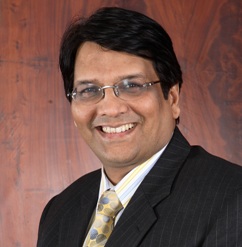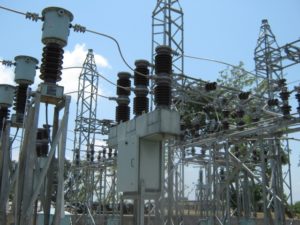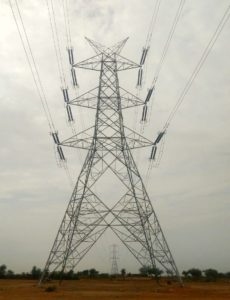
SPML Infra Ltd has over three decades of multidisciplinary EPC experience in water, solid waste management, power transmission & distribution and civil infrastructure development. In this exclusive exchange, we have Subhash Sethi discussing his company’s power T&D contracting business in detail. While expounding on the challenges faced by power T&D EPC contractors, Sethi also notes with pleasure the positive transformation with respect to the tendering business of power utilities. An interview by Venugopal Pillai.
In early 2017, SPML had reported the winning of major substation orders from Power Grid Corporation of India. Tell us more.
SPML Infra has received good orders from Power Grid Corporation of India Ltd (PGCIL) in the past few months. The orders include 16 units of new 132kV substations/extensions in all three districts of Tripura under North East Region (NER) Power System Improvement Project; extension of 400kV substation with 2×500 MVA autotransformer at Malda, West Bengal and other six locations associated with Eastern Region Strengthening Scheme; Extension of 400/220kV Mainpuri substation in Uttar Pradesh with 1×500 MVA autotransformer; and extension of 400/220kV Sikar substation in Rajasthan with 1×500 MVA autotransformer and associated bays among others. Apart from the above orders from PGCIL, SPML Infra also received order for 220kV GIS substation in Faridabad, Haryana from Haryana Vidyut Prasaran Nigam Ltd and 132kV GIS Substation at Burdwan, West Bengal from West Bengal State Electricity Transmission Company Ltd among others. All these projects are under various stages of execution.
SPML Infra has also been executing rural electrification orders under IPDS and DDGUJY. What is the current volume of orders on hand?
SPML Infra is one of the largest contributors to rural electrifications in India with more than a million rural households across the country has been connected with electricity. It has executed a number of rural electrification projects in the states of Bihar, Jharkhand, Karnataka, Madhya Pradesh, Maharashtra, Odisha and West Bengal and is presently executing two important projects in Patna and Gaya district in Bihar where it will provide over 7 lakh power connections to consumers belongs to below poverty line (BPL) strata. SPML Infra recently received one order from West Bengal State Electricity Distribution Company Ltd in Murshidabad district under DDUGJY scheme. SPML Infra’s total order book is around Rs.6,900 crore, out of which power projects comprise Rs.2,200 crore being executed in several states in India.
What is your view on the availability of skilled manpower for power T&D projects?
There is no doubt that skilled manpower is important in any project execution which needs car eful implementation of engineering designs. Power projects require specialized technical manpower during the project construction period as well as during the O&M phase. These days’ power T&D projects are executed with advanced technological innovations, modern equipment with proper system and processes. The technical and managerial competency is critical in ensuring timely execution of projects and optimum performance upon commissioning. Due to technology intensive sector, adequate skill development and capacity building measures need to be taken to ensure availability of manpower required for the execution of projects. We also need to provide continuous training to the current manpower to ensure them having up-to-date technical skills, higher motivation and productivity.
eful implementation of engineering designs. Power projects require specialized technical manpower during the project construction period as well as during the O&M phase. These days’ power T&D projects are executed with advanced technological innovations, modern equipment with proper system and processes. The technical and managerial competency is critical in ensuring timely execution of projects and optimum performance upon commissioning. Due to technology intensive sector, adequate skill development and capacity building measures need to be taken to ensure availability of manpower required for the execution of projects. We also need to provide continuous training to the current manpower to ensure them having up-to-date technical skills, higher motivation and productivity.
When it comes to sourcing of equipment for power T&D projects, what is your view on Chinese equipment?
With the influx of projects under various initiatives, foreign players specially Chinese and Korean electrical equipment manufacturers have captured almost one fourth of Indian transformers and switchgear market, mainly in EHV and UHV class as the products offered by them are considerably cheaper and technologically advanced, but results in considerable foreign exchange outflow. The main concern related to Chinese power equipment is connected with national security as the power distribution system caters to transportation and railways, pipelines, water supply systems, telecommunications and other critical infrastructure while also serving government or military facilities. SPML Infra have not used any of these equipment in our several projects given the susceptibility of breakdowns and many a times difficult to timely repair due to non-availability of spare parts. Instead of that, we have used highly sophisticated German equipment apart from quality Indian manufacturers in our projects.
 SPML Infra has been actively working with state power utilities. Do you see any difference in the tendering practices, over the recent past?
SPML Infra has been actively working with state power utilities. Do you see any difference in the tendering practices, over the recent past?
With the advent of time and emerging technology adoption, the tender process has gone online; with the decline in manual intervention, manipulations have virtually been eliminated. A level playing field that benefits the meritorious has emerged with stronger business focus. We have been pleasantly surprised on being informed online about the award of contracts in states conventionally infamous for handing out contracts for non-business reasons. Therefore an entirely new way of doing business has emerged in the last couple of years.
What comes to your mind as the most memorable project commissioned by SPML Infra in the power T&D space?
SPML Infra has completed and commissioned a mammoth task of laying 320.54 km underground cable project in Bangalore with 11kV XLPE cable and 129 units of ring main units (RMU) and breakers in a record time of just 12 months, which happens to be the first project in power sector by SPML. It was a daunting task full of challenges to execute this project in the area with a number of public utilities, transportation, communication systems, public and private places. However, with proper coordination and by making all stakeholders aware about it helped us complete the project.
In summary, what would you regard as the three most important challenges that power T&D contractors are facing today?
There are several challenges being faced by T&D contractors, but the three most important among all are: maintaining positive cash flow throughout the project execution period, timely delivery of equipment in sync with construction progress requires planning in great detail and any mismatch results in delay; and no compromise on quality of work while squeezing the time to maintain project on schedule.


